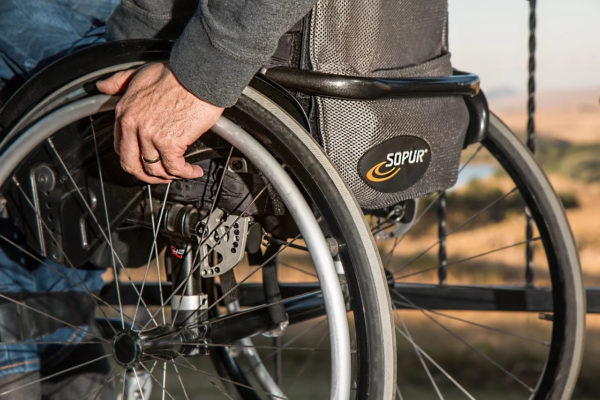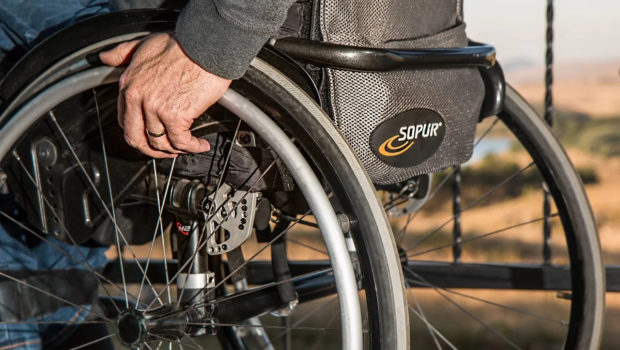Innovative Technology for People with Disabilities
Living with a disability isn’t easy. You’re being asked to navigate a world that, all too often, simply wasn’t built for your particular needs.
But the good news is that technology today is helping to eliminate many of those barriers, whether in the home, the workplace, or the larger community. And the innovations just seem to keep on coming. That means that the future for people living with disabilities has, perhaps, never been brighter. Nor has the hope and dream of a more diverse, more truly inclusive society for people of all abilities ever been closer to reality.

The Power of “Sight”
Among the greatest advancements in technology for people with disabilities involve innovations for the visually impaired. According to recent estimates, more than 10 million people in the US have some sort of visual impairment, and more than 1 million people are legally blind.
Thanks to existing and emerging technology, even people with the most significant visual impairments can do computer work, search the Internet, and navigate their homes and communities with ease and safety.
For example, recent updates to Chrome’s browser allow for web pages to be automatically saved as tagged PDFs, which make them more accessible to screen readers for the blind and those with low vision.
But that’s only the beginning: innovations are being developed to help the blind safely negotiate city streets through the use of personal navigation devices based on GPS technology.
And those autonomous vehicles we’ve heard so much about recently? They’re increasingly being studied for use by blind drivers. That could open up an entirely new world of freedom for people who for far too long have had to rely on others to get where they want to go.
Get to Work!
Having a life you love usually involves having a job you love. Unfortunately, though, for people with disabilities, finding steady employment can be a particular challenge. Studies show that the average unemployment rate for people with disabilities is more than double that of non-disabled people.
Less than 20% of disabled adults in the US are currently employed. To be sure, this can be attributed in part to the stigmatization they face in the workplace. But it’s also due to the simple fact that having a disability can make a traditional on-campus job difficult, if not impossible.
Again, that’s rapidly changing, thanks to technology. For people with significant mobility challenges or health vulnerabilities, such as those who are paralyzed or bedbound, extended reality (XR) can bring the workplace right into their homes. XR allows them to see, communicate, and perform “alongside” their coworkers as if they were actually in the office.
For wheelchair-users, likewise, new advancements in motorized wheelchair design may well be making physical barriers a thing of the past. These chairs can do just about everything but your taxes! They can manage uneven, rocky, and slick terrain. They can run for long distances before requiring a recharge. Some can even climb stairs!
Perhaps one of the most important advances when it comes to employment for people with disabilities, however, is simply in the many ways that today’s telecommunications tools allow people to connect with the professional resources they need.
There is ample support available, and it’s often tailored to the individual’s particular need, Whether you have a learning disability, a physical and mobility impairment, a vision or hearing improvement, or a mental illness, there are online communities dedicated to nearly any condition, illness, or injury. These online support networks can provide you and yours with the support and information you need. For instance, the National Telecommuting Institute is dedicated to connecting people with disabilities to employers looking to hire them for remote positions.
The Doctor is In
People with disabilities may face significant challenges with mobility and transportation, which can impede their ability to receive proper healthcare, particularly in the face of a pandemic. Thanks to the advent of telemedicine, however, people with disabilities can receive consistent, high-quality, and on-demand care without even leaving the comfort of their own home.
Best of all, telehealthcare isn’t just limited to video conferencing and consultations with the healthcare team. An entire inventory of mobile health technologies has flooded the market in recent years. And while many of these can be easily purchased over-the-counter (OTC), such as wearable step counters and blood pressure monitors, your healthcare team has even more in their toolkit.
They can order more advanced remote monitors for at-home testing, most of which are covered by health insurance in the same way a traditional clinical test would be. These remote health monitors can do everything from ECG and EEGs to sleep studies. They can even monitor patients for medical emergencies, such as a fall or a heart attack.
The Takeaway
No one ever said that living with a disability was easy. However, thanks to the technology of today and the innovations on the horizon for tomorrow, it is getting easier. Modern technology is helping people with disabilities live healthier, happier, and more independent lives.
















